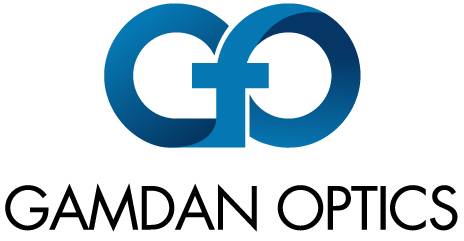Different Crystals for Different OPOs
OPTICAL PARAMETRIC OSCILLATORS
*This is the third in a series of Optical Parametric Oscillators. Read part 2 here.
Different Crystals for Different OPOs
With all the different types of OPOs, the choice of nonlinear crystal depends upon many factors: the desired beam powers, wavelengths, temporal profile (pulsed or CW), and other aspects of the OPO. The characteristics of all three beams (pump, signal, and idler) matter. The nonlinear crystal needs to transmit all the wavelengths. The crystal needs to provide a sufficiently strong nonlinear interaction between the beams—the crystal’s ability to support a strong nonlinear interaction is often characterized by a number, the nonlinear coupling coefficient. The nonlinear interaction’s efficiency goes as the product of the peak power of one of the input beams and a number depending upon the nonlinear coefficient. The coefficient is a characteristic of the crystal and how it is used.
For weak beams that might be CW, highly nonlinear materials with large coefficients are needed. For powerful pulsed beams, the crystal doesn’t need as large a nonlinear coefficient. If beams (especially powerful beams) are focused into the nonlinear crystal, then the OPO often needs a crystal that is largely immune from optical damage. Some other considerations may be: the quality, shape, and size of available crystals; how well the crystals accept optical coatings; the thermal properties of the crystals; the mechanical properties of the crystals; and the environmental ruggedness of the crystals. Here is where some of the best known nonlinear materials are used.
Lithium Niobate (LiNbO3)
This is a material with outstandingly large nonlinear coefficients. LiNbO3 can be used with relatively weak CW beams. It can even be fabricated into microscopic waveguides, and it can also be engineered into what is called periodically poled structures which, though more complex, have added benefits in reducing walkoff and allowing the use of crystal orientations with larger nonlinear coefficients. In these ways, LiNbO3 is magical. LiNbO3 can also be doped with magnesium to make it more resistant to optical damage. LiNbO3 is transmissive from about 400 nm out through about 4000 to 5000 nm.
Lithium Triborate (LBO)
Lithium Triborate (LBO) can be thought of as the opposite of LiNbO3. LBO has outstanding resistance to optical damage, far superior to LiNbO3. However LBO is considerably less efficient as a nonlinear material at the same pump power—it has smaller nonlinear coefficients. Consequently, LBO is not nearly as good for low power beams, but LBO is a great choice for some of the highest power applications, especially with pulsed lasers. Also, LBO has a transmission range from about 200 nm to about 2300 nm. For an idler in the 2300 to 5000 nm range, LiNbO3 will work, and LBO will not. For a pump at 355 nm, LBO will work well and LiNbO3 will not. In high power applications, LBO is remarkable.
Potassium Titanyl Phosphate (KTP)
Potassium Titanyl Phosphate (KTP) is between LBO and LiNbO3 in its nonlinear coefficients, and its transmission is from about 375 to 4200 nm.
Beta Barium Borate (BBO)
BBO is interesting because it has better nonlinear coefficients than LBO and has a broader transmission range too. However, BBO is considerably more susceptible to the environment (water vapor) than LBO, it has larger walkoff, and phase matching in BBO is relatively insensitive to temperature—that is good in some ways, but it makes it hard to tune or scan the wavelength of a BBO OPO by varying crystal temperature.
Zinc Germanium Phosphide (ZGP)
Conclusion
OPOs can provide coherent light over a range of wavelengths and with pulsed or CW formats. This flexibility makes OPOs useful for applications like spectroscopy and military uses. In the future OPOs may find ever growing use in sensors or in photonic integrated circuits. More OPOs are likely to use fiber technology in the future. The key component in an OPO is the nonlinear crystal. There is no one crystal that is best for all OPOs. Some crystals are optimal for miniature devices, perhaps involving micro-fabrication. Others are ideal for high energy or high average power applications. Short wavelength OPOs need blue or UV transmission, while mid-IR OPOs need IR transmission that covers all the long wavelengths involved.
DR. WILLIAM GROSSMAN, AUTHOR
Will Grossman is a consultant retained by GAMDAN, and his role is to help our customers be more successful with nonlinear optics. His technical expertise includes laser design, nonlinear optics, and laser reliability. Dr. Grossman’s laser designs are used around the world in commercial products. More on the author can be found here.
How Can we help?
If you’re looking for a nonlinear optical crystal company that’s earned a strong track record of success and an ever-growing list of loyal customers, contact us today to learn more about what we can do for you. We serve several industries including industrial fabrication, medical lasers, in aerospace and defense industry and many others. We look forward to hearing from you and putting a plan of action together as partners.





